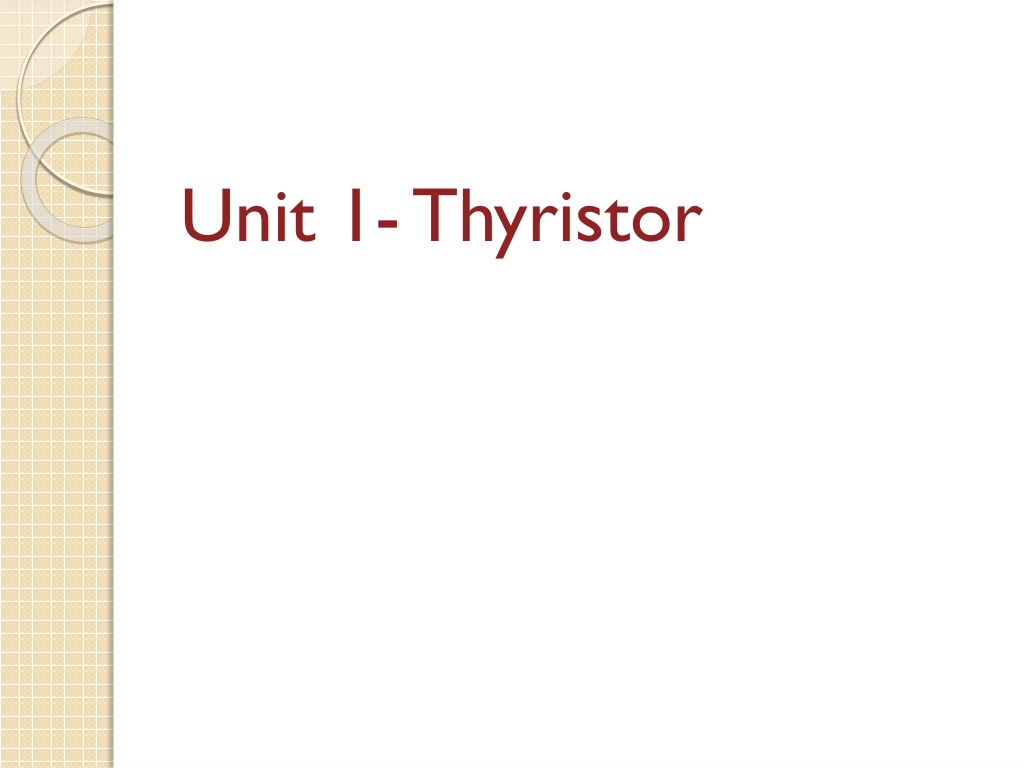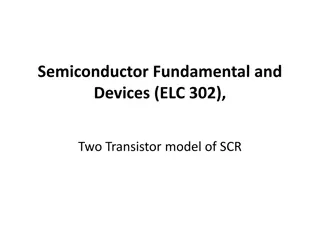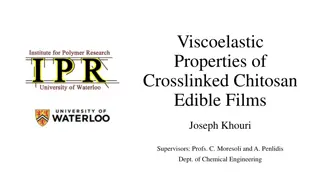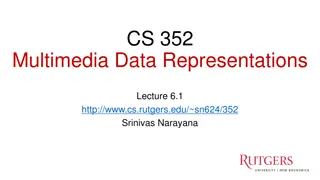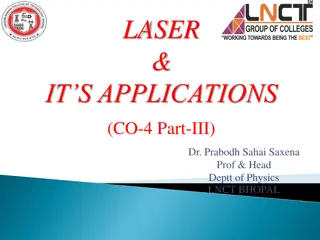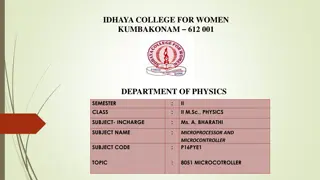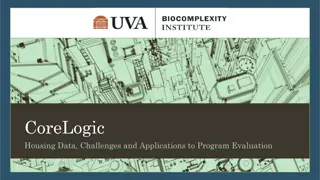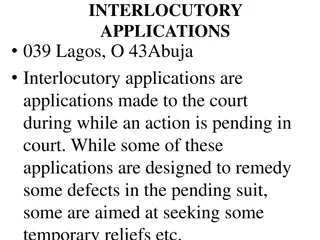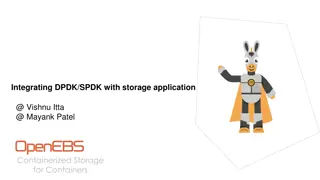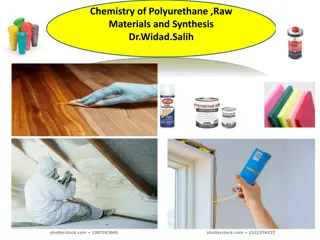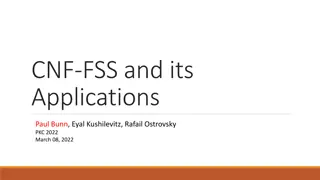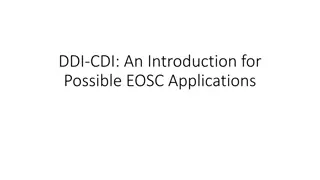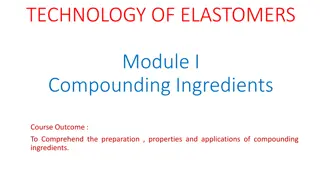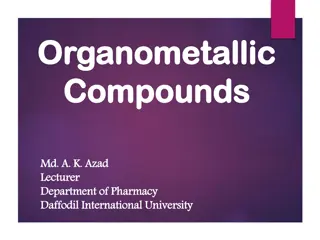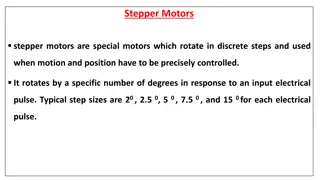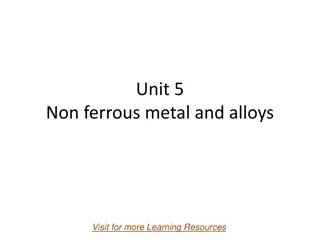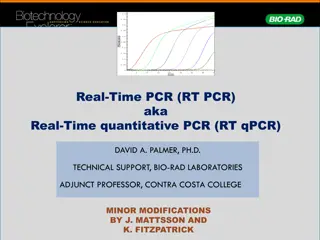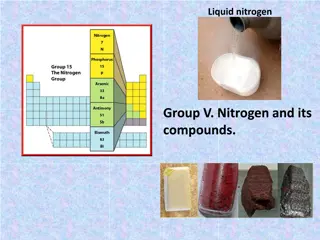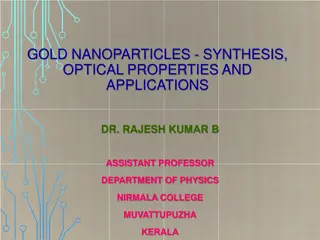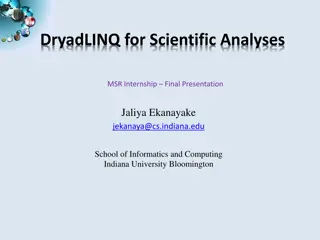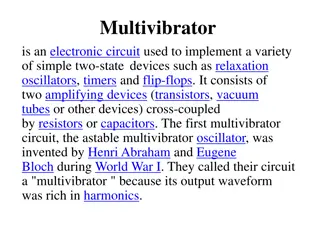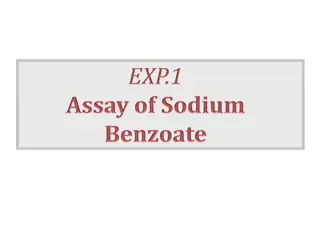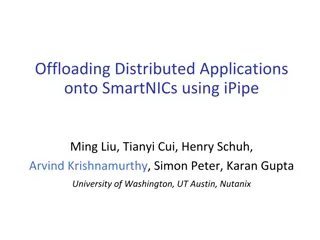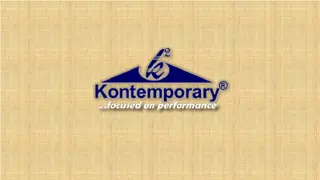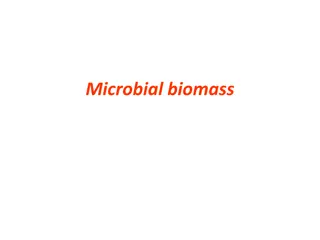Understanding Thyristors: SCR and Its Applications
Thyristors are semiconductor devices used for current switching applications. The Silicon Controlled Rectifier (SCR) is a key member of the thyristor family, capable of rectification, power regulation, and inversion. Learn about the construction, working modes, and applications of SCR in power electronics.
Download Presentation

Please find below an Image/Link to download the presentation.
The content on the website is provided AS IS for your information and personal use only. It may not be sold, licensed, or shared on other websites without obtaining consent from the author. Download presentation by click this link. If you encounter any issues during the download, it is possible that the publisher has removed the file from their server.
E N D
Presentation Transcript
Introduction of thyristor family Thyristor include a group of semiconductor devices primarily used in current switching applications. These devices consist of four or more semiconductor layers and include those listed here. DEVICES Silicon Controlled Rectifier (SCR) Complimentary silicon controlled rectifier(CSCR) TRIAC Gate Turn-off Switch (GTO) Silicon Controlled Switch (SCS) DIAC Uni-junction Transistor (UJT) Programmable Uni-junction Transistor (PUT) Light Activated Silicon Controlled Rectifier (LASCR)
Introduction of SCR The Silicon Controlled Rectifier (SCR) is the most important and mostly used member of the thyristor family. SCR can be used for rectification, regulation of power and inversion, etc. Like a diode, SCR is a unidirectional device that allows the current in one direction and opposes in another direction. SCR is a three terminal device;anode,cathode and gate as shown in figure. SCR has built in feature to turn ON or OFF and its switching is controlled by biasing conditions and gate input terminal. This results in varying the average power delivered at the load ,by varying the ON periods of the SCR.It can handle several thousands of voltages and currents. SCR symbol and its terminals are shown in figure. different applications like
Construction of Silicon Controlled Rectifier(SCR) The SCR is a four layer and three terminal device. The four layers made of P and N layers, are arranged alternately such that they form three junctions J1, J2 and J3. These junctions are either alloyed or diffused based on the type of construction. The outer layers (P and N-layers) are heavily doped whereas middle P and N-layers are lightly doped. The gate terminal is taken at the middle P-layer, anode is from outer P- layer and cathode is from N- layer terminals. The SCR is made of silicon because compared to germanium leakage current in silicon is very small.
To manufacture the SCR, three types of constructions are used, namely the planar type, Mesa type and Press pack type. For low power SCRs, planar construction is used where all the junctions in an SCR are diffused. In mesa type construction, junction J2 is formed by diffusion method and thereby outer layers are alloyed to it. This construction is mainly used for high power Silicon Controlled Rectifiers. To provide high mechanical strength, the SCR is braced with plates made up of either molybdenum or tungsten. And one of these plates is soldered to a copper stud which is further threaded to connect the heat sink. Working or Modes of Operation of SCR Depending on the biasing given to the SCR, the operation of SCR is divided into three modes. They are Forward blocking Mode Forward Conduction Mode and Reverse Blocking Mode
Forward Blocking Mode In this mode of operation, the Silicon Controlled Rectifier is connected such that the anode terminal is made positive with respect to cathode while the gate terminal kept open. In this state junctions J1 and J3 are forward biased and the junction J2 reverse biased. Due to this, a small leakage current flows through the SCR. Until the voltage applied across the SCR is more than the break over voltage of it, SCR offers a very high resistance to the current flow. Therefore, the SCR acts as a open switch in this mode by blocking forward current flowing through the SCR as shown in the VI characteristics curve of the SCR.
Forward Conduction Mode In this mode, SCR or thyristor comes into the conduction mode from blocking mode. It can be done in two ways as either by applying positive pulse to gate terminal or by increasing the forward voltage (or voltage across the anode and cathode) beyond the break over voltage of the SCR. Once any one of these methods is applied, the avalanche breakdown occurs at junction J2. Therefore the SCR turns into conduction mode and acts as a closed switch thereby current starts flowing through it. Note that in the VI characteristic figure, if the gate current value is high, the minimum will be the time to come in conduction mode as Ig3 > Ig2 > Ig1. In this mode, maximum current flows through the SCR and its value depends on the load resistance or impedance. It is also noted that if gate current is increasing, the voltage required to turn ON the SCR is less if gate biasing is preferred. The current at which the SCR turns into conduction mode from blocking mode is called as latching current (IL). And also when the forward current reaches to level at which the SCR returns to blocking state is called as holding current (IH). At this holding current level, depletion region starts to develop around junction J2. Hence the holding current is slightly less than the latching current.
Reverse Blocking Mode In this mode of operation, cathode is made positive with respect to anode. Then the junctions J1 and J3 are reverse biased and J2 is forward biased. This reverse voltage drives the SCR into reverse blocking region results to flow a small leakage current through it and acts as an open switch as shown in figure. So, the device offers a high impedance in this mode until the voltage applied is less than the reverse breakdown voltage VBR of the SCR. If the reverse applied voltage is increased beyond the VBR, then avalanche breakdown occurs at junctions J1 and J3 which results to increase reverse current flow through the SCR. This reverse current causes more losses in the SCR and even to increase the heat of it. So there will be a considerable damage to the SCR when the reverse voltage applied more than VBR.
Two Transistor Analogy of SCR The two transistor analogy or two transistor model of SCR expresses the easiest way to understand the working of SCR by visualizing it as a combination of two transistors as shown in figure. The collector of each transistor is connected to the base of the other transistor. Assume that load resistance is connected between the anode and cathode terminals and a small voltage is applied at the gate and cathode terminals. When there is no gate voltage, the transistor 2 is in cut-off mode due to zero base current. Therefore, no current flows through the collector and hence the base of transistor T1. Hence, both transistors are open circuited and thereby no current flows through the load. When a particular voltage is applied between the gate and cathode, a small base current flows through the base of the transistor 2 and thereby collector current will increase. And hence the base current at the transistor T1 drives the transistor into saturation mode and thus load current will flow from anode to cathode.
From the above figure the base current of transistor T2 becomes the collector current of transistor T1 and vice-versa. Hence Ib2 = Ic1 and Ic2 = Ib1 Also current through the cathode terminal, Ik = Ig + Ia (1) For a transistor, Ib1 = Ie1 Ic1 (2) and Ic1 = 1Ie1 + Ico1 (3) Where Ico1 is the leakage current. Substituting equation 3 in equation 2 we get Ib1 = Ie1 (1 1) Ico1 .(4) From the figure anode current is the emitter current of transistor T1, Ia = Ie1 Then Ib1 = Ia (1 1) Ico1 And also for transistor T2 Ic2 = 2Ie2 + Ico2 But Ik = Ie2 Therefore, Ic2 = 2Ik + Ico2 Ic2 = 2 (Ig + Ia) + Ico2 ..(5)
But Ib1 = Ic2 ..(6) Substituting the equations 4 and 5 in equation 6 we get Ia (1 1) Ico1 = 2 (Ig + Ia) + Ico2 Ia = [ 2 Ig + Ico1 + Ico2] / [1- ( 1 + 2)] By assuming the leakage currents are negligible in both transistors we get Ia = [ 2 Ig] / [1- ( 1 + 2)] where 1 and 2 are the respective gains of the two transistors.
SCR Turn ON Methods From the above equation, if ( 1 + 2) is equal to one then Ia becomes infinite. That means anode current suddenly rises to a high value and latches into conduction mode from non-conductive state. This is called regenerative action of SCR. So for triggering of SCR the gate current value ( 1 + 2) must approach to unity. From the obtained equation the conditions to turn the SCR into turn ON are 1. The leakage current through the SCR will increase when the temperature of the device is very high. This turns the SCR into conduction. 2. When the current flowing through the device is extremely small then 1 and 2 are very small. The conditions for break over voltage are the larger values of electron multiplication factor Mn and hole multiplication factor Mp near the junction J2. Therefore the by increasing the voltage across the device to break over voltage VBO causes the junction J2 breakdown and thereby the SCR is turned ON. 3. And also by increasing 1 and 2 break over condition is achieved. The current gains of the transistors depend on the value of Ig so by increasing Ig, SCR can be turned ON.
SCR Turn OFF Methods An SCR cannot be turned OFF through the gate terminal like turning ON process. To turn OFF the SCR, anode current must be reduced to a level below the holding current level of the SCR. The process of turning OFF the SCR is called as commutation. Two major types of commutating the SCR are, Natural Commutation and Forced Commutation Forced commutation is again classified into several types such as Class A Commutation Class B Commutation Class C Commutation Class D Commutation Class E Commutation
SCR Triggering (Turn-on) Methods When SCR anode terminal of SCR is connected with a positive terminal of SCR and cathode terminal of SCR is connected with a negative terminal of SCR. In this type of connection, the anode is positive with respect to the cathode. Hence, the SCR is connected as forward bias. As we have seen in the working of SCR ,it has three operating regions; Forward Blocking Mode Forward Conducting Mode Reverse Blocking Mode
Generally, SCR is connected in forward bias. But in forward bias also, it has two modes of regions. Hence, the methods of switching of SCR from forward blocking mode to forward conducting mode is known as Triggering of SCR or Turning ON the SCR. The triggering of SCR depends on the temperature, supply voltage, and gate current. There are several methods to turn-on SCR. These methods are listed below. Forward Voltage Triggering Temperature Triggering dv/dt Triggering Light Triggering Gate Triggering
Forward Voltage Triggering When the SCR is connected in forward bias and supplied at a rated voltage between anode and cathode, but the gate current is not given. In this condition, the SCR remains in forward blocking mode and current cannot flow. Because junction J2 is in reverse bias and supply voltage is not enough to cross the depletion region. But if we gradually increase the supply voltage and it increases than the breakover voltage, avalanche breakdown occurs in junction J2. And large current starts flowing through the SCR. In this condition, due to high current and high voltage, large voltage drop (power loss) occurs in the SCR. And this method is not useful because it draws high current which can damage the SCR. Therefore, this method of triggering the SCR is not useful in most of the cases.
Temperature Triggering This type of triggering is also known as thermal triggering. The reverse leakage current can be increased by increasing the temperature of junction J2. This causes to decrease in the depletion width and at a certain temperature, the leakage starts conducting the SCR. This type of triggering of SCR uses in special circumstances. And it is also considering while designing the thyristor. The device uses the SCR is also capable to sustain for temperature. Practically, this method is not used because it causes thermal runaways and it will damage the SCR. dv/dt Triggering When SCR is connected in forward bias, the junction J1 and J3 are in forward bias and junction J2 is in reverse bias. In this condition, it behaves as a capacitor where two plates J1 and J3 and dielectric is J2. The charging current of the capacitor as below equation. Where C is capacitance and dv/dt is the rate of change of applied voltage. From the above equation, if we increase the rate of change of voltage (dv/dt), the charging current also increases. And SCR starts conducting. This is not suitable for the practical triggering of SCR. Because a high rate of change of voltage causes high spikes in voltage waveform. These spikes are high enough to damage the SCR.
Light Triggering In this method, the SCR is triggered by the Light. Hence, this method is also known as radiation triggering. When light strikes on the junction J2, it creates more electrons-holes pair at the junction J2. Which causes an additional charge carrier at a junction that is used to generate current. And SCR starts conducting. This method is used in the power system for triggering SCR in converts for the HVDC transmission line. This type of SCR is specially designed and it is known as Light Activated SCR (LASCR).
Gate Triggering SCR This is the most used method for triggering the SCR. Because this method is more efficient to turn-on SCR. In this method, the SCR is connected in forward bias and Gate current is supplied at junction J2. For this purpose, a positive gate voltage is applied between the gate and the cathode terminal of SCR. The gate current causes to increase the reverse leakage current. And it causes the breakdown of junction J2 even if the applied voltage is less than the breakover voltage. If we give more gate current, the SCR can conduct at low voltage also. The value of the gate current depends on the size of SCR. The value of gate current is in the range of few milli amperes. There are three types of gate signals used to trigger the SCR. DC Gate Triggering AC Gate Triggering Pulse Triggering DC Gate Triggering A proper value of DC source is connected between the gate and cathode terminal. The gate terminal is positive with respect to the cathode terminal. When supplied DC voltage is sufficient to produce gate current, it causes the breakdown of junction J2 and SCR stats conducting.
In this method, the DC source is used to generate a gate current. DC supply is a continuous source of supply and is connected continuously with the device. Hence, it causes more power loss during conduction. AC Gate Triggering In this method, the AC source is used to generate gate pulses. It requires a very low voltage level. Hence, it is necessary to use the step-down transformer to reduce the voltage level. There are two methods to trigger the SCR with the AC Gate supply. In one method, only a resistor and diode are used and in the second method, two diodes, one resistor, and one capacitor are required. The first method is known as R Triggering and the second method is known as RC triggering. Hence, there are two methods of triggering SCR with AC source and that is; R Triggering RC Triggering
R Triggering The connection diagram for R triggering is as shown in the below figure. The variable resistor is used to control the value of the gate current. By changing the value of the resistor, we can generate a sufficient amount of gate current which is used to trigger the SCR. The diode D is connected in series with a variable resistor. This diode is known as a blocking diode. And it is used to prevent the current in the negative half cycle. This gate circuit is a purely resistive circuit. Hence, the gate current is in phase with the applied voltage. By this method, we can get a maximum 90-degree firing angle.
RC Triggering The connection diagram for RC triggering is as shown in the below figure. In this method, the capacitor is charged up to the peak value of the supplied voltage through variable resistor R, in a positive half cycle. The variable resistor controls the amount of gate current. When a sufficient amount of gate current is generated, the SCR starts conducting .That can achieve a firing angle of more than 90-degree. In the negative half cycle, the capacitor is discharged through the diode D2. The diode D1 is used to prevent the reverse breakdown of gate cathode junction in a negative half cycle.
Pulse Triggering In this method, the gate current is generated by a single pulse or a sequence of high-frequency pulses. This method is the most popular method for triggering the SCR because it does not require continuous pulse. Hence, the loss occurred in the gate circuit is very less. The pulse transformer is used to make the isolation between the main source and gate circuit.
SCR Turn OFF Methods There are several ways to properly implement the SCR Turn OFF methods like Natural, Forced, Dynamic. In Forced Commutation, there are again several sub-categories like Class A, B, C, D, E. The turn OFF process of an SCR is called commutation. The term commutation means the transfer of currents from one path to another. So the commutation circuit does this job by reducing the forward current to zero so as to turn OFF the SCR or Thyristor. To turn OFF the conducting SCR the below conditions must be satisfied. The anode or forward current of SCR must be reduced to zero or below the level of holding current and then, A sufficient reverse voltage must be applied across the SCR to regain its forward blocking state. When the SCR is turned OFF by reducing forward current to zero. There exist excess charge carriers in different layers. To regain the forward blocking state of an SCR, these excess carriers must be recombined. Therefore, this recombination process is accelerated by applying a reverse voltage across the SCR.
SCR Turn OFF Methods The reverse voltage which causes to commutate the SCR is called commutation voltage. Depending on the commutation voltage located, the commutation methods are classified into two major types. Those are 1) Forced commutation and 2) Natural commutation. Let us discuss in brief about these methods.
Natural Commutation In natural commutation, the source of commutation voltage is the supply source itself. If the SCR is connected to an AC supply, at every end of the positive half cycle the anode current goes through the natural current zero and also immediately a reverse voltage is applied across the SCR. These are the conditions to turn OFF the SCR This method of commutation is also called as source commutation, or line commutation, or class F commutation. This commutation is possible with line commutated inverters, controlled rectifiers, cycloconverters and AC voltage regulators because the supply is the AC source in all these converters.
Forced Commutation In case of DC circuits, there is no natural current zero to turn OFF the SCR. In such circuits, forward current must be forced to zero with an external circuit to commutate the SCR hence named as forced commutation. This commutating circuit consist of components like inductors and capacitors called as commutating components. These commutating components cause to apply a reverse voltage across the SCR that immediately bring the current in the SCR to zero. Based on the manner in which the zero current achieved and arrangement of the commutating commutation is classified into different types such as class A, B, C, D, and E. This commutation is mainly used in chopper and inverter circuits. components, forced
